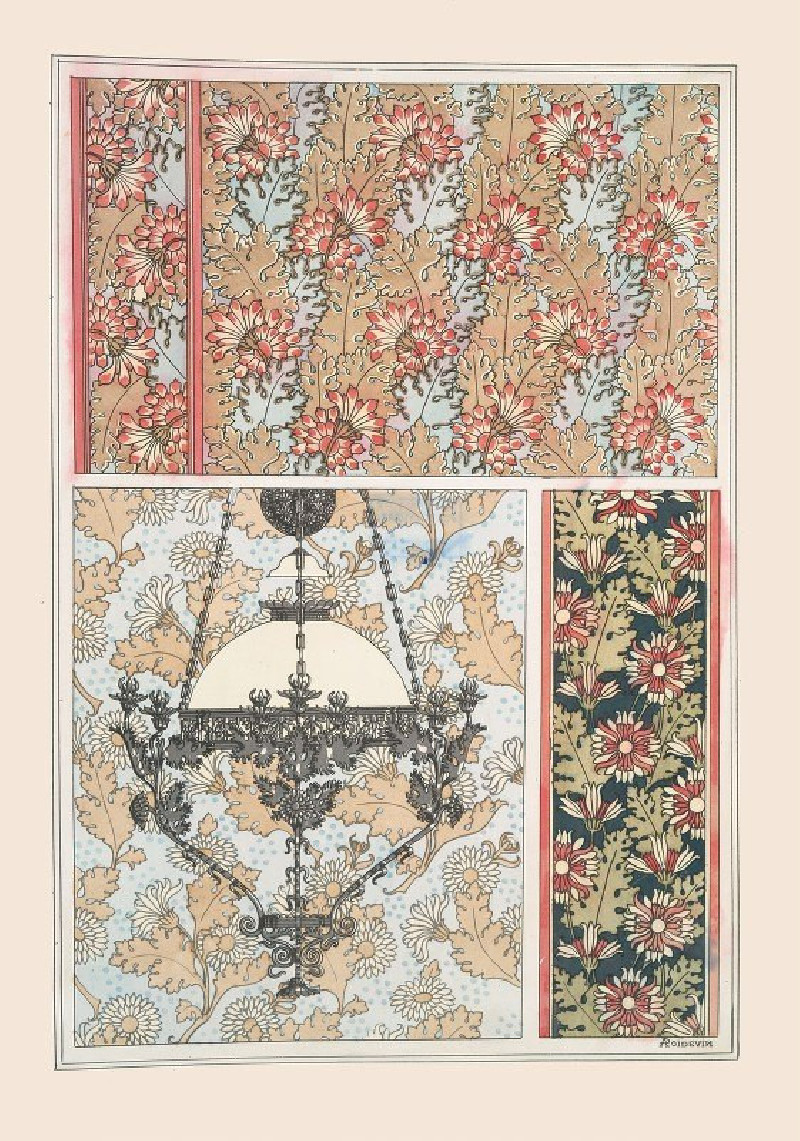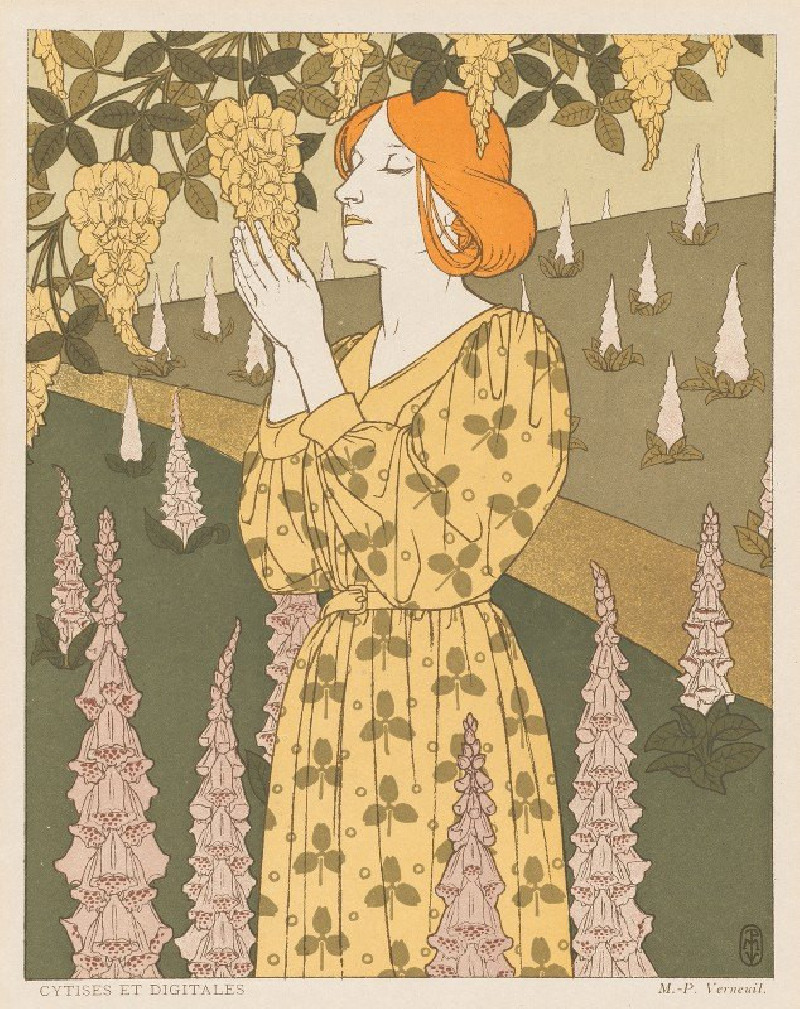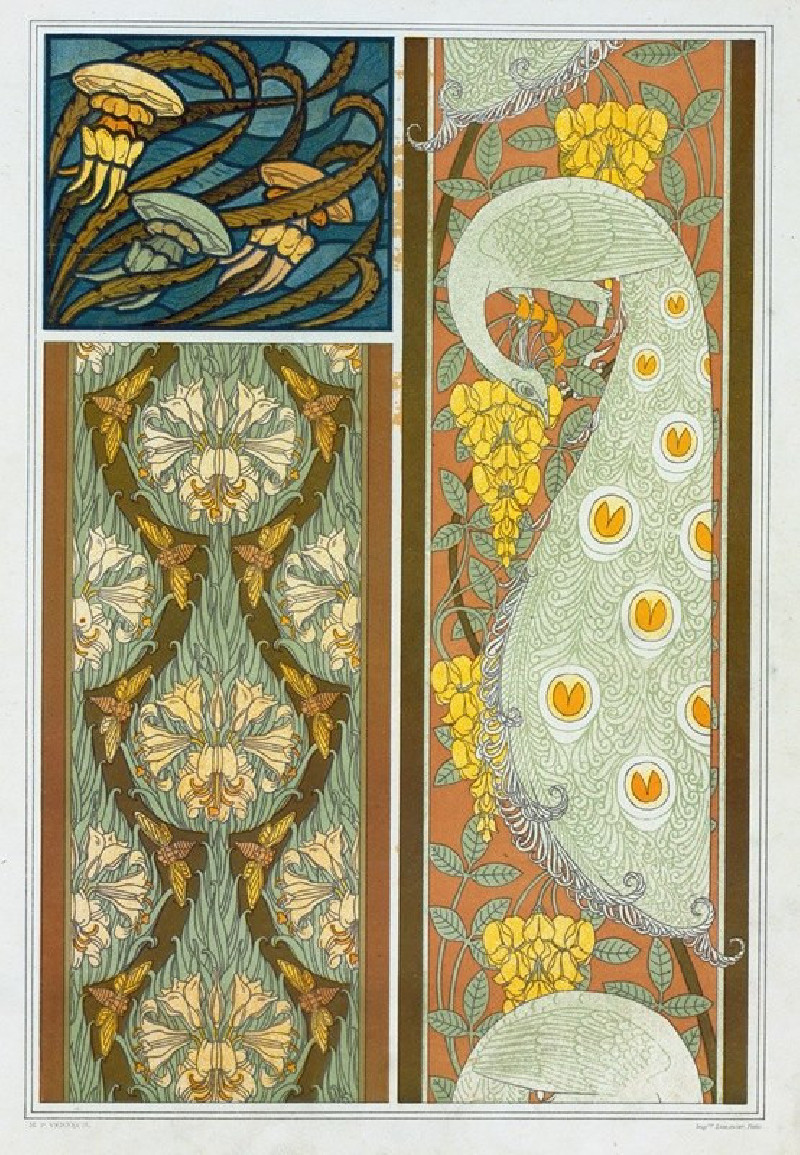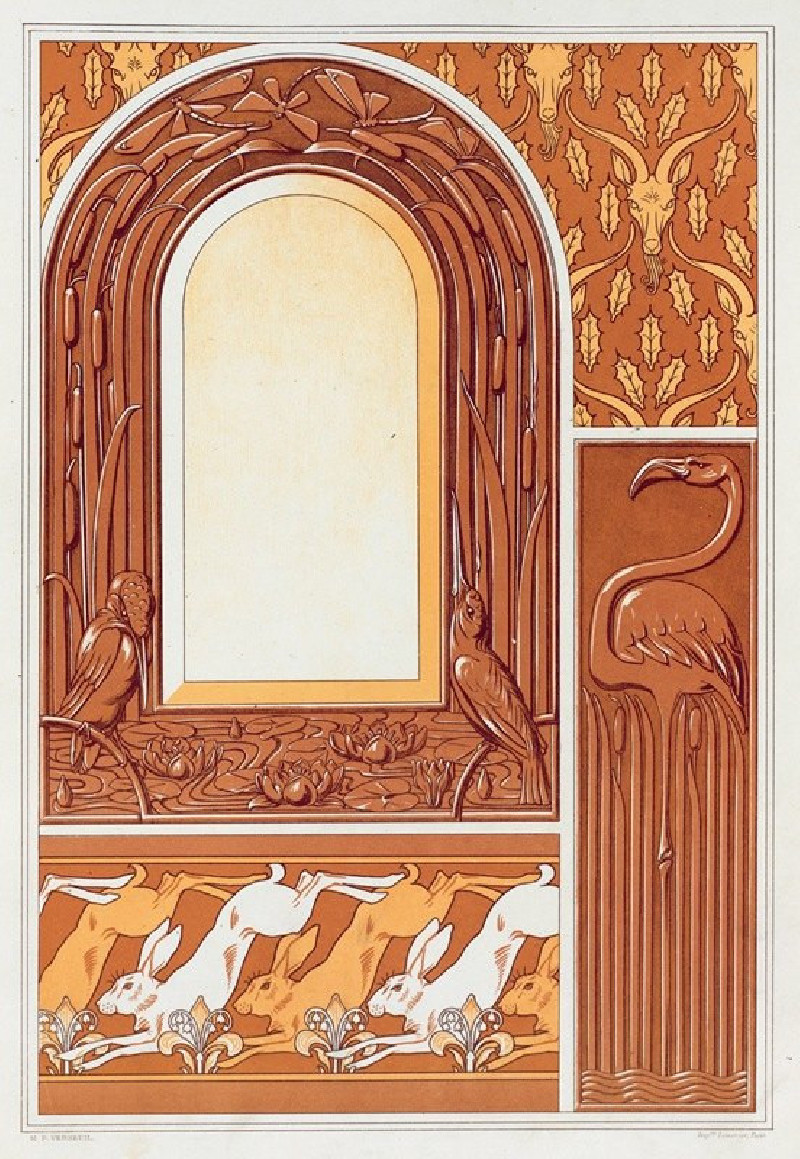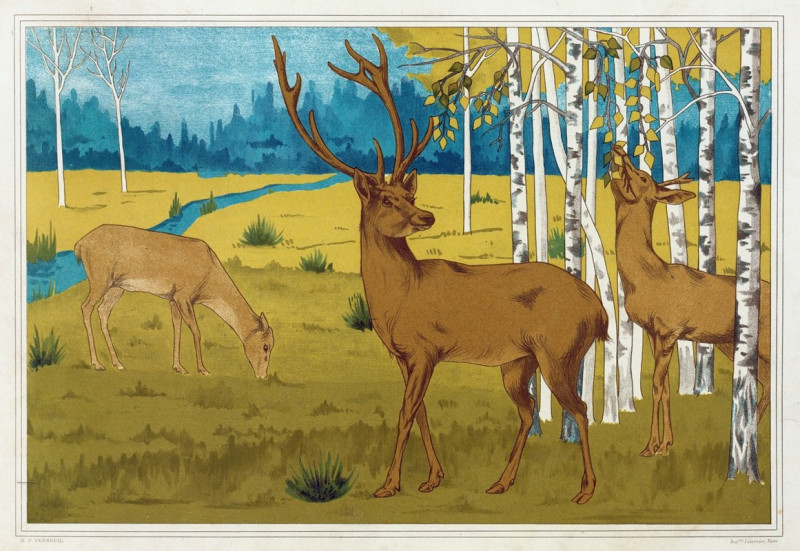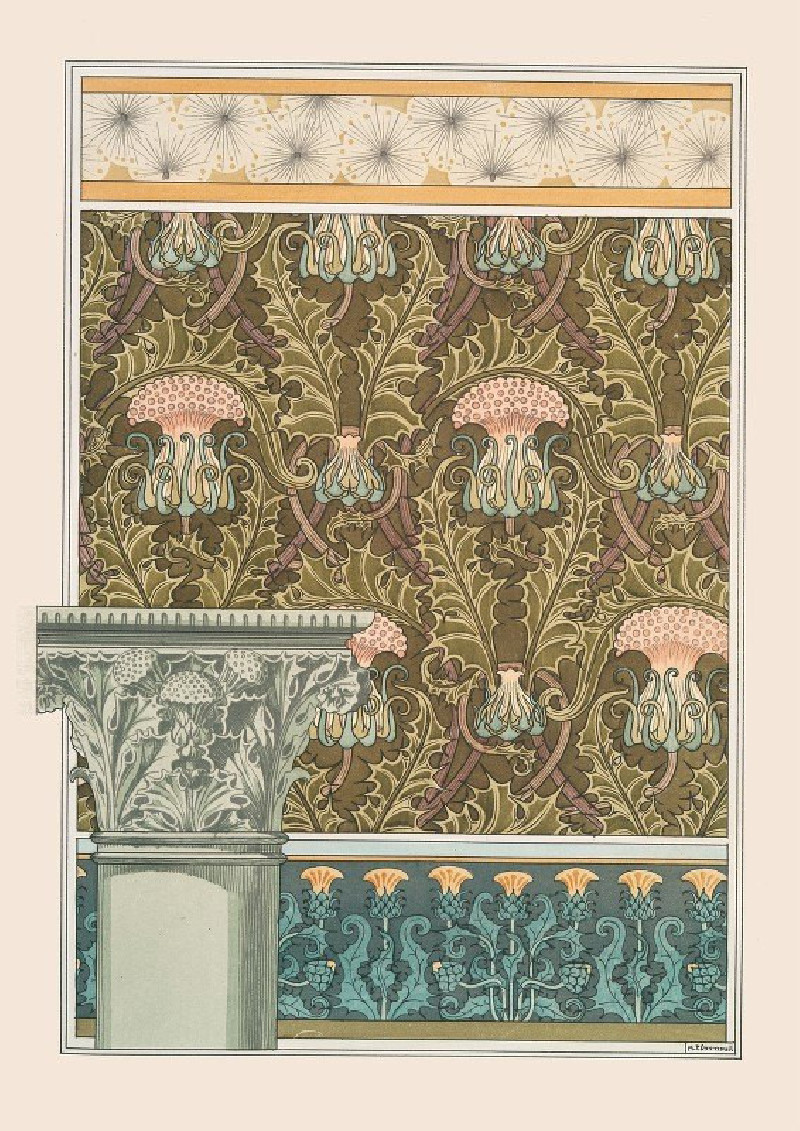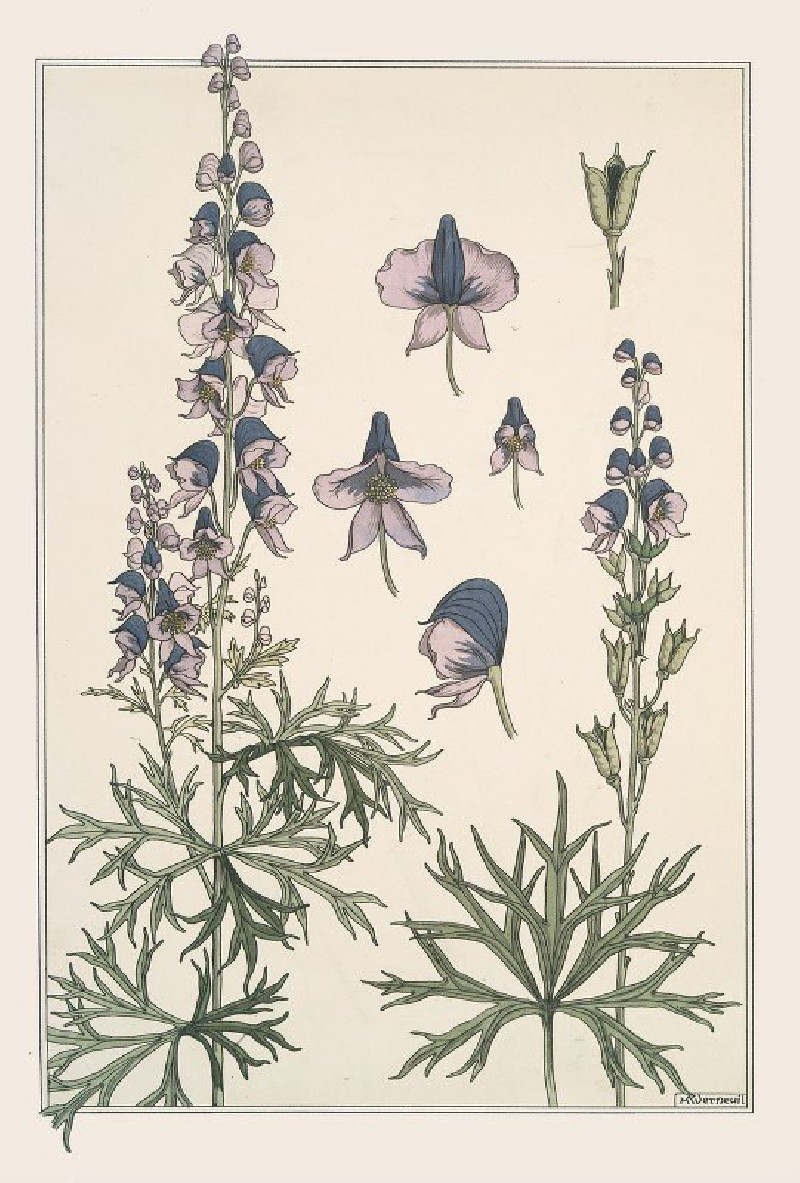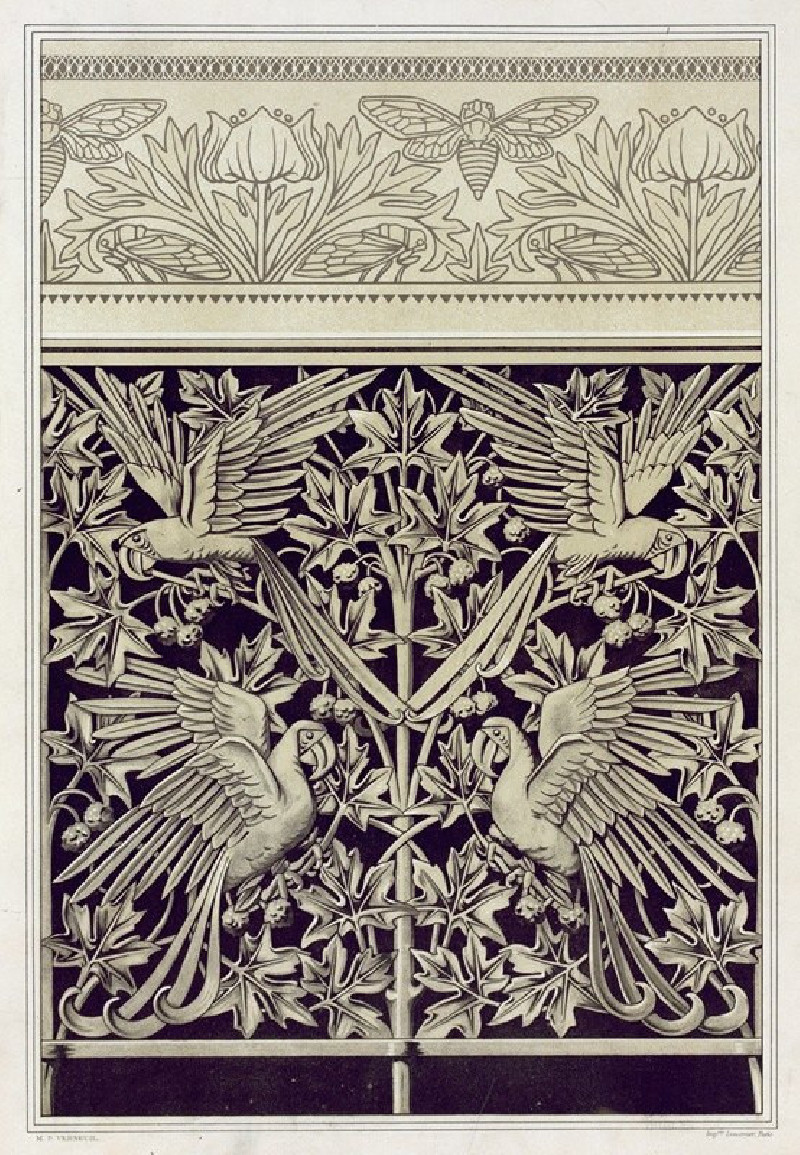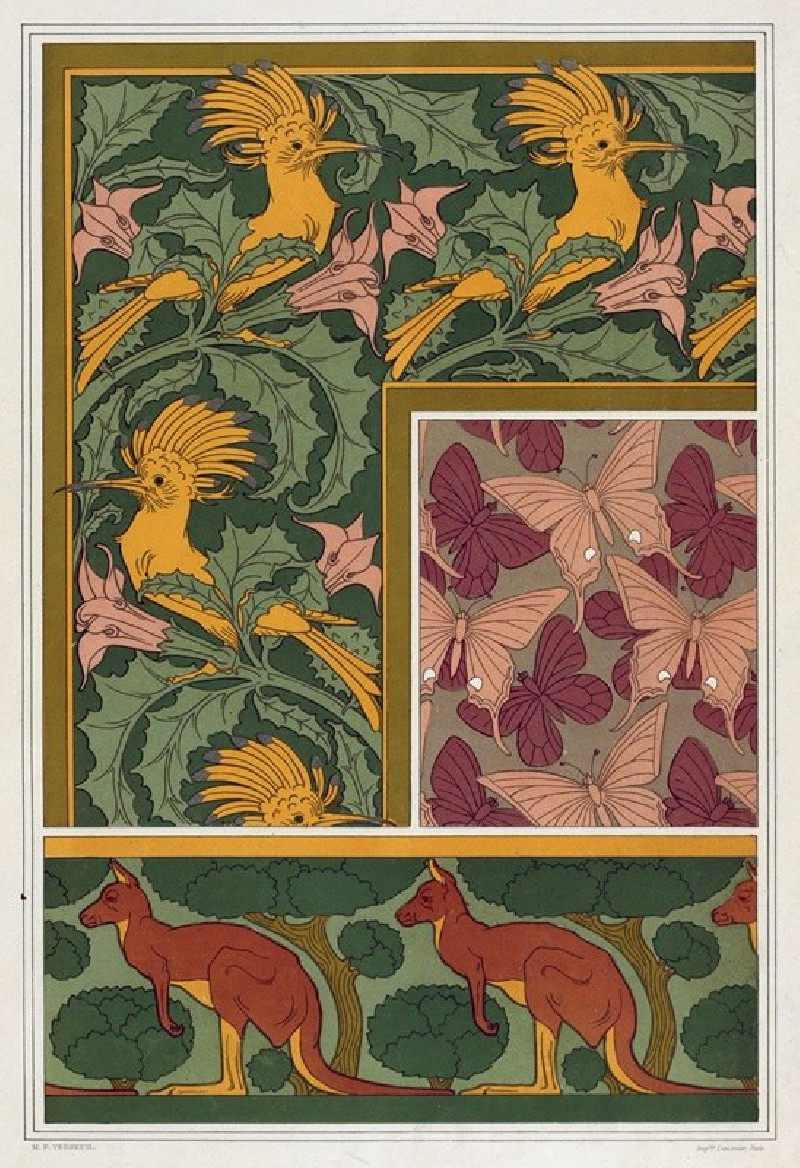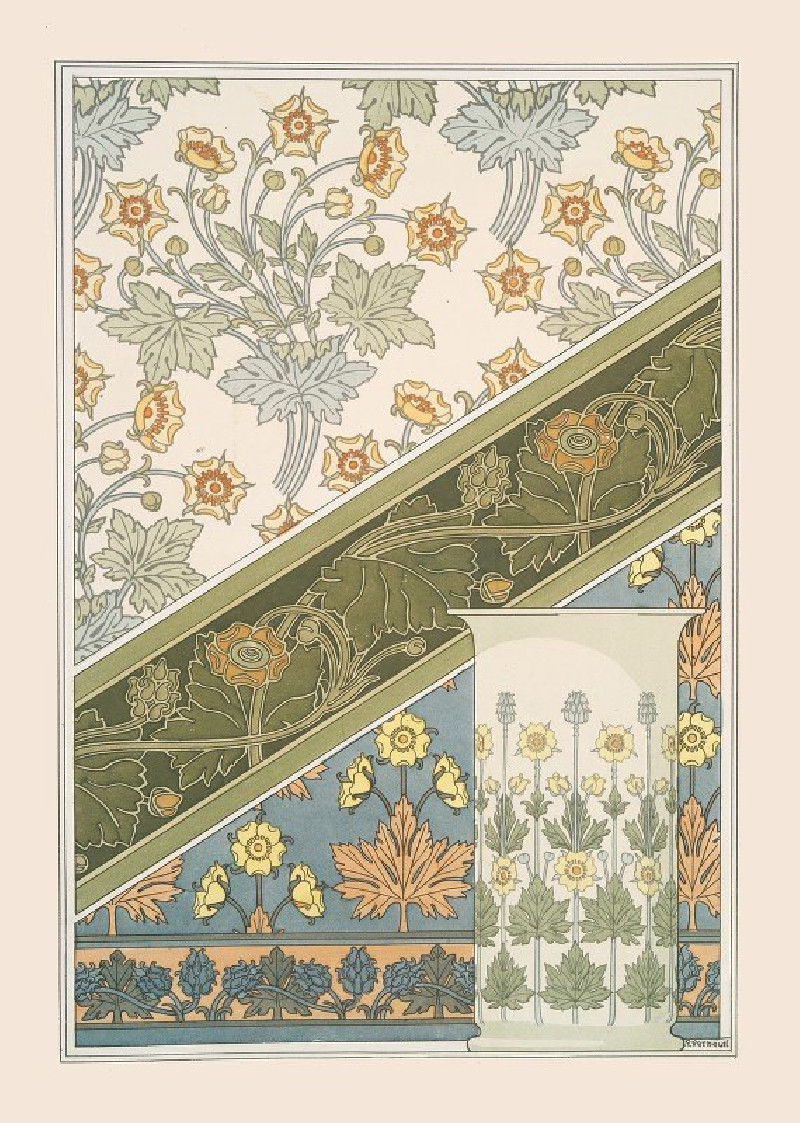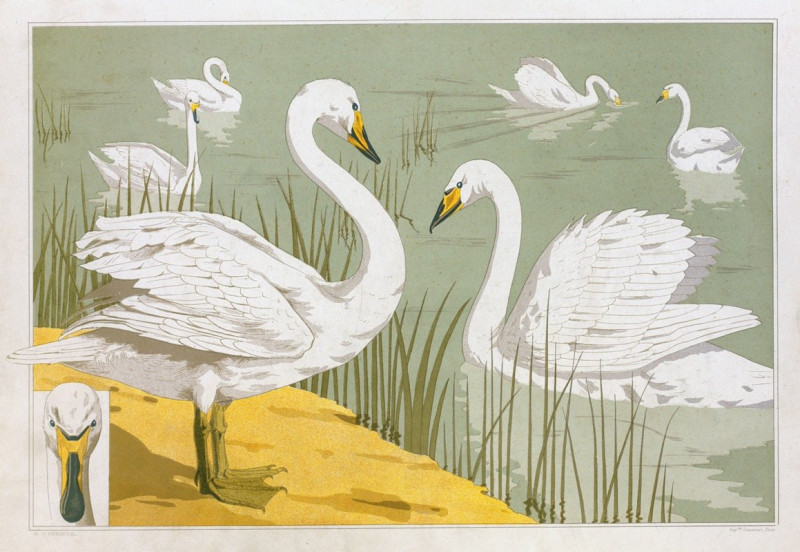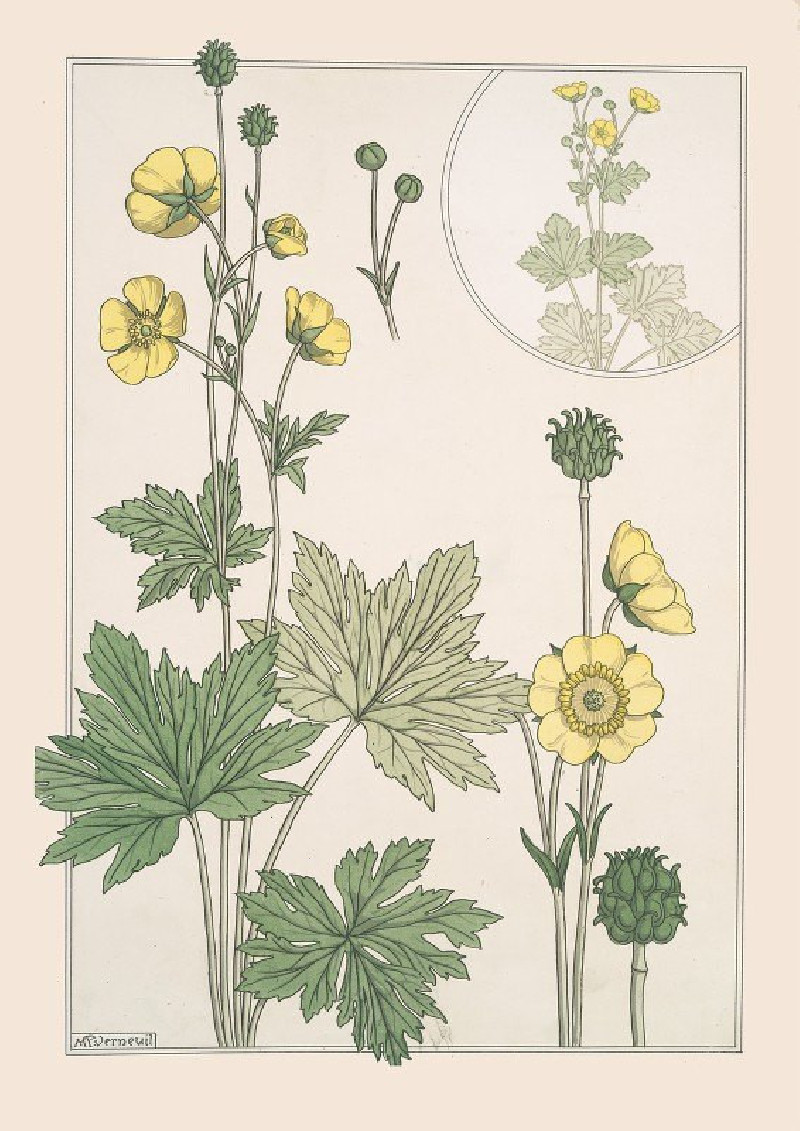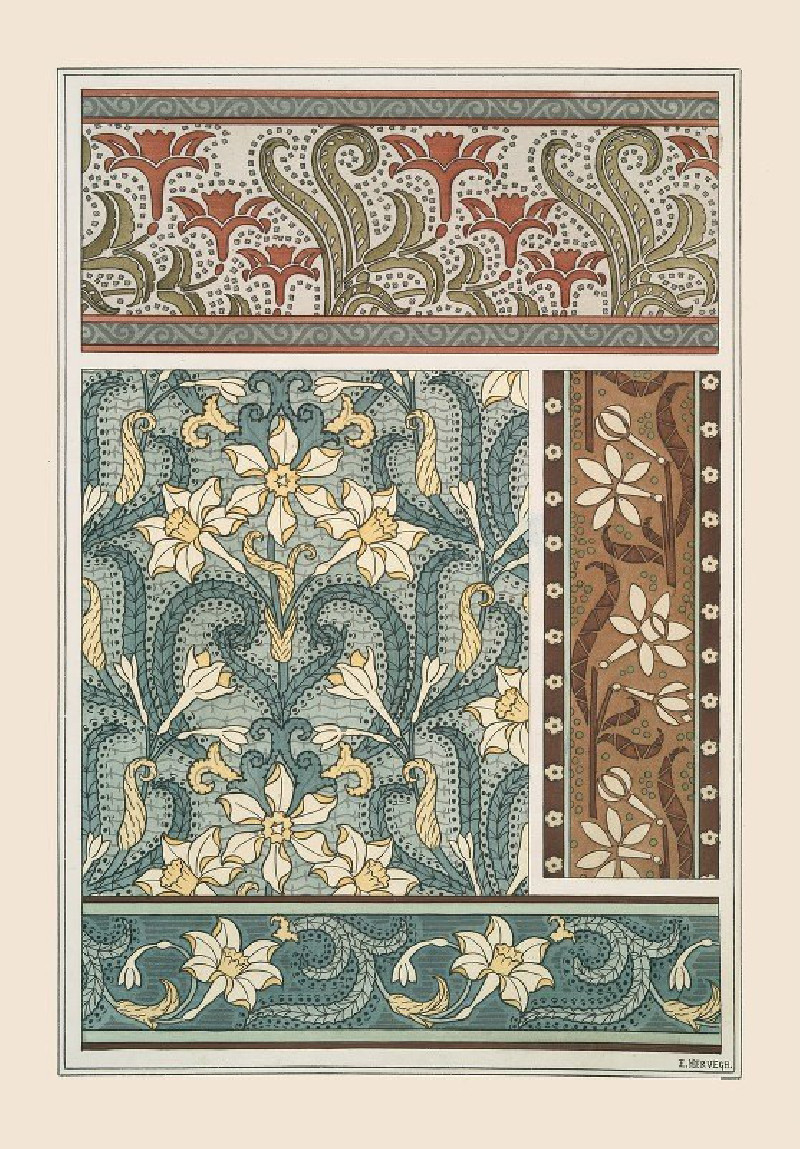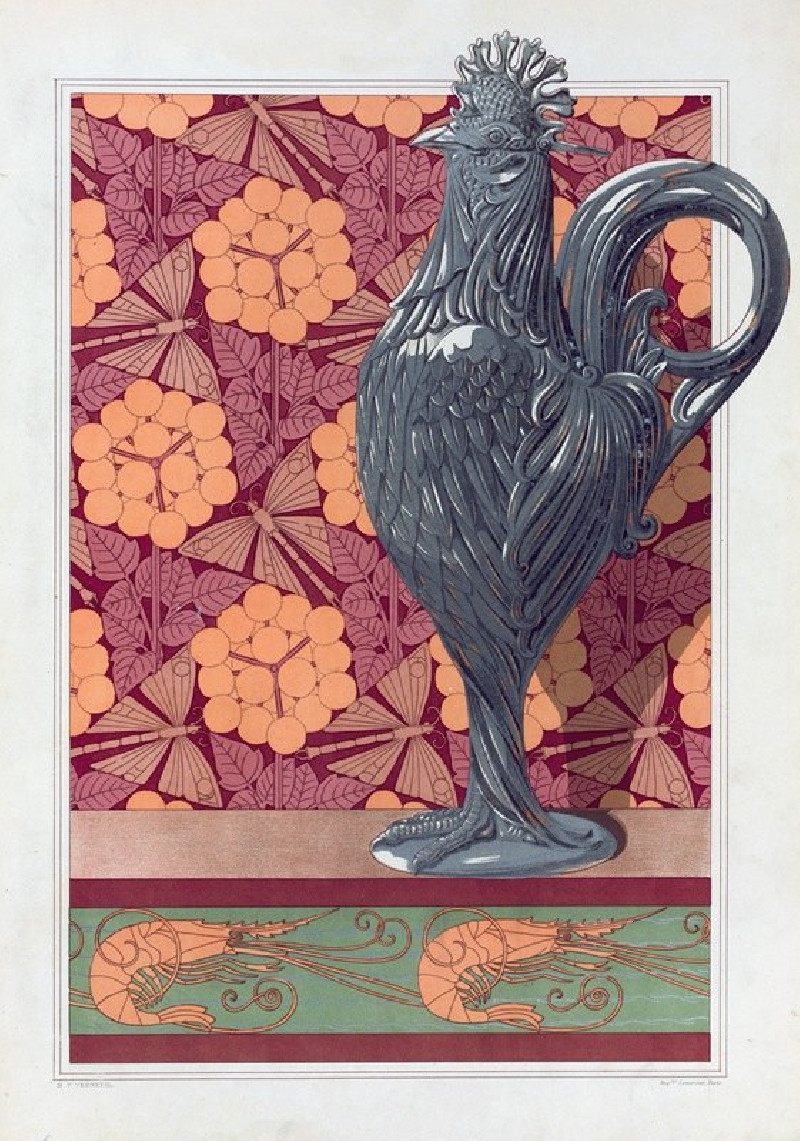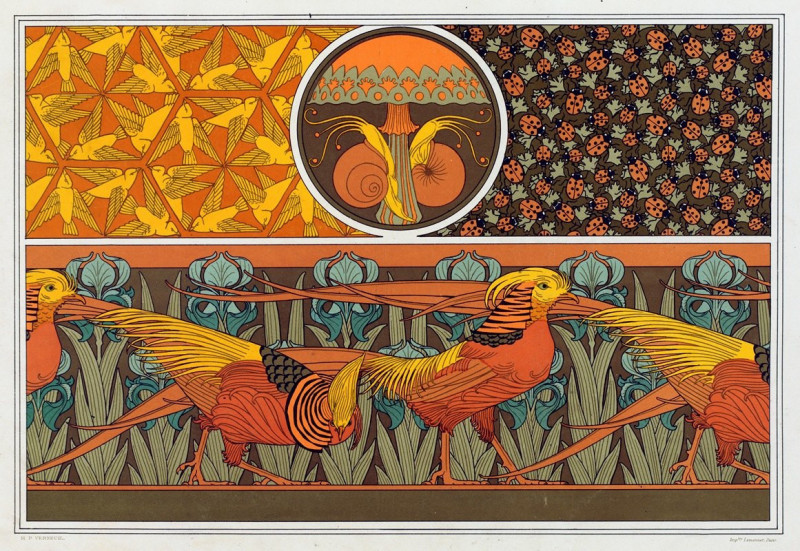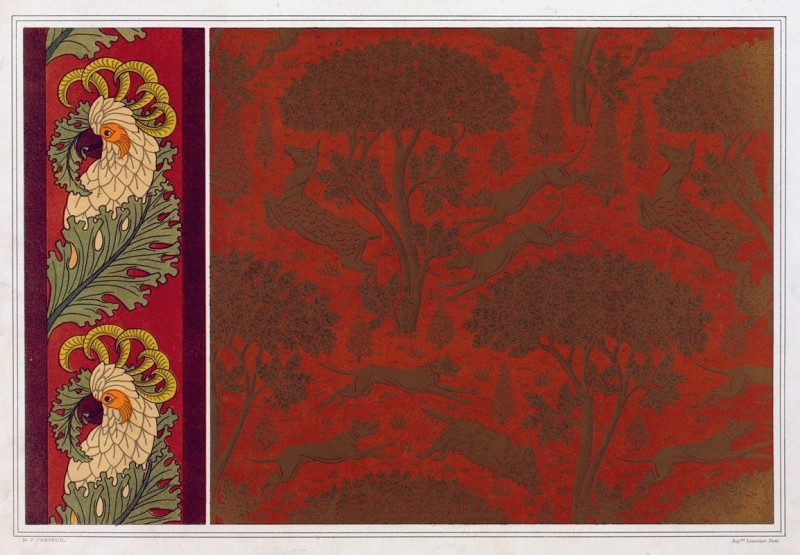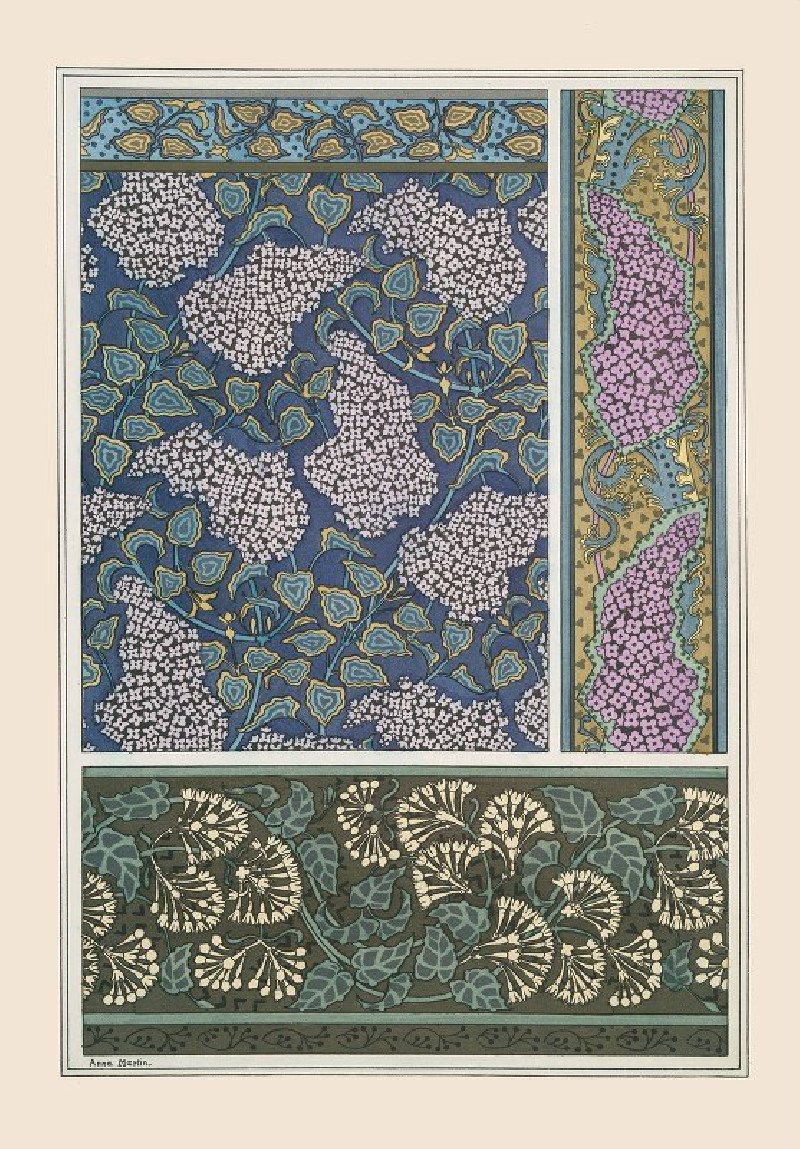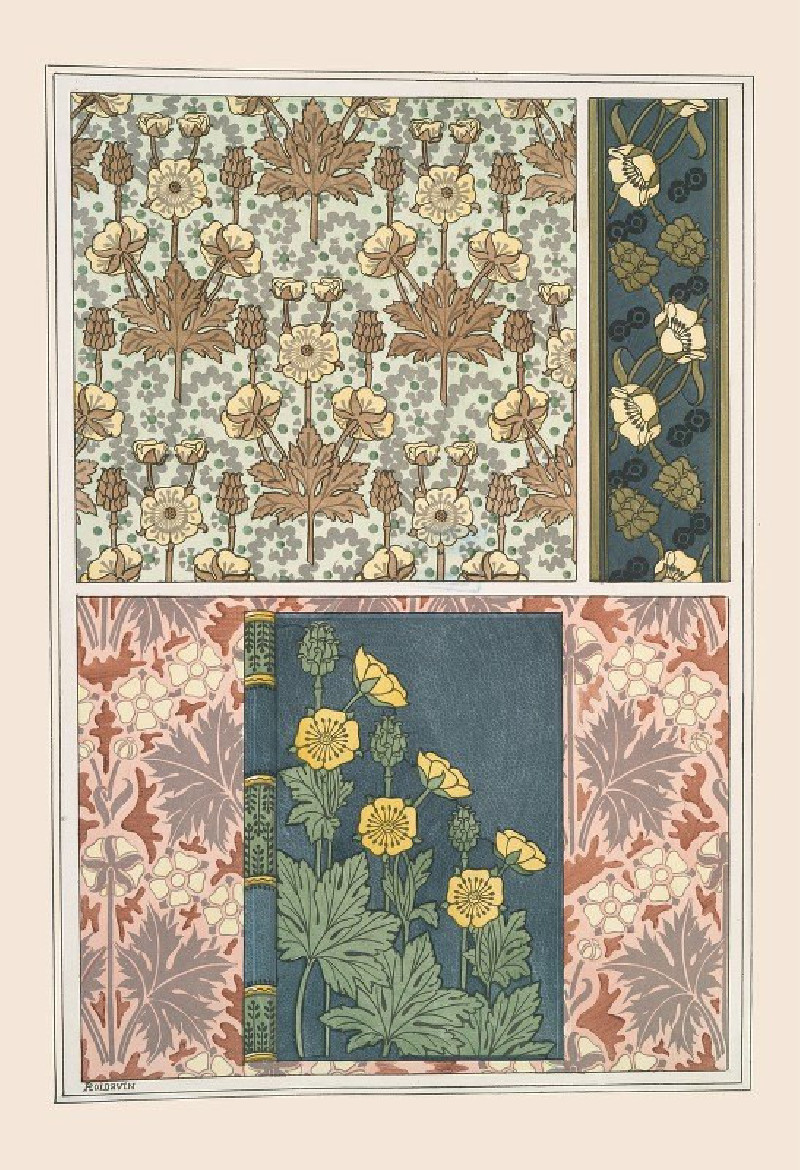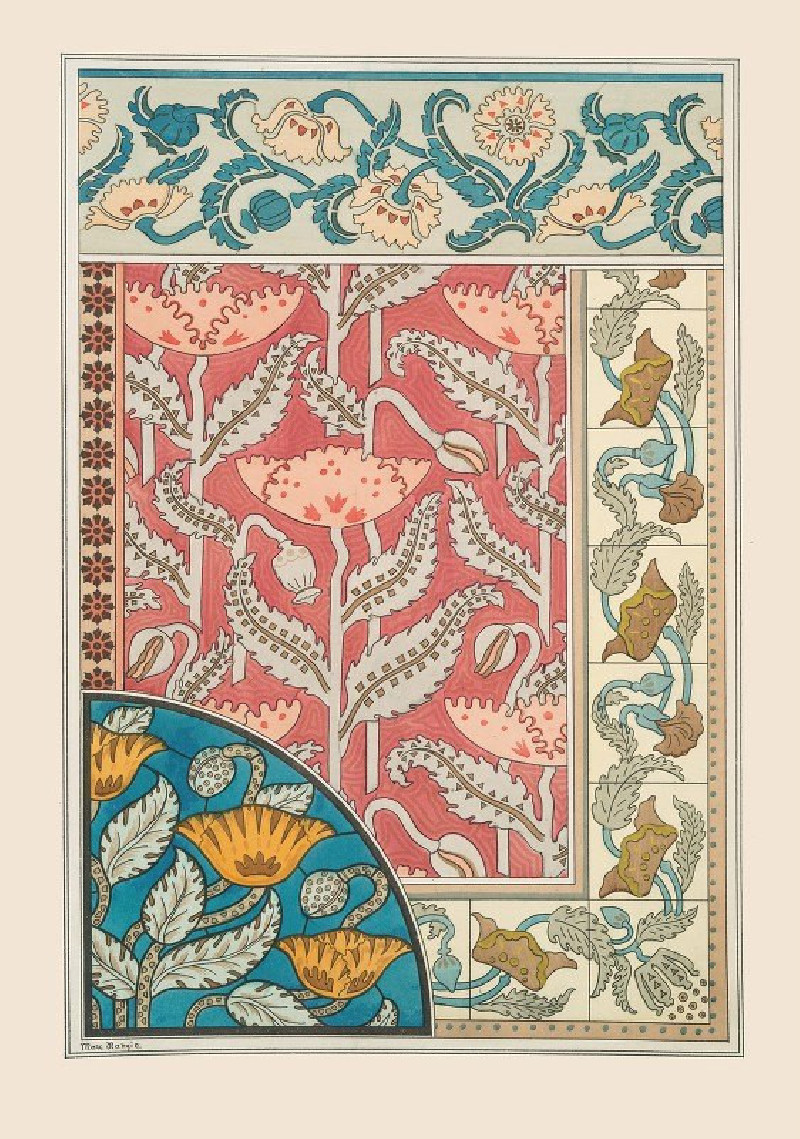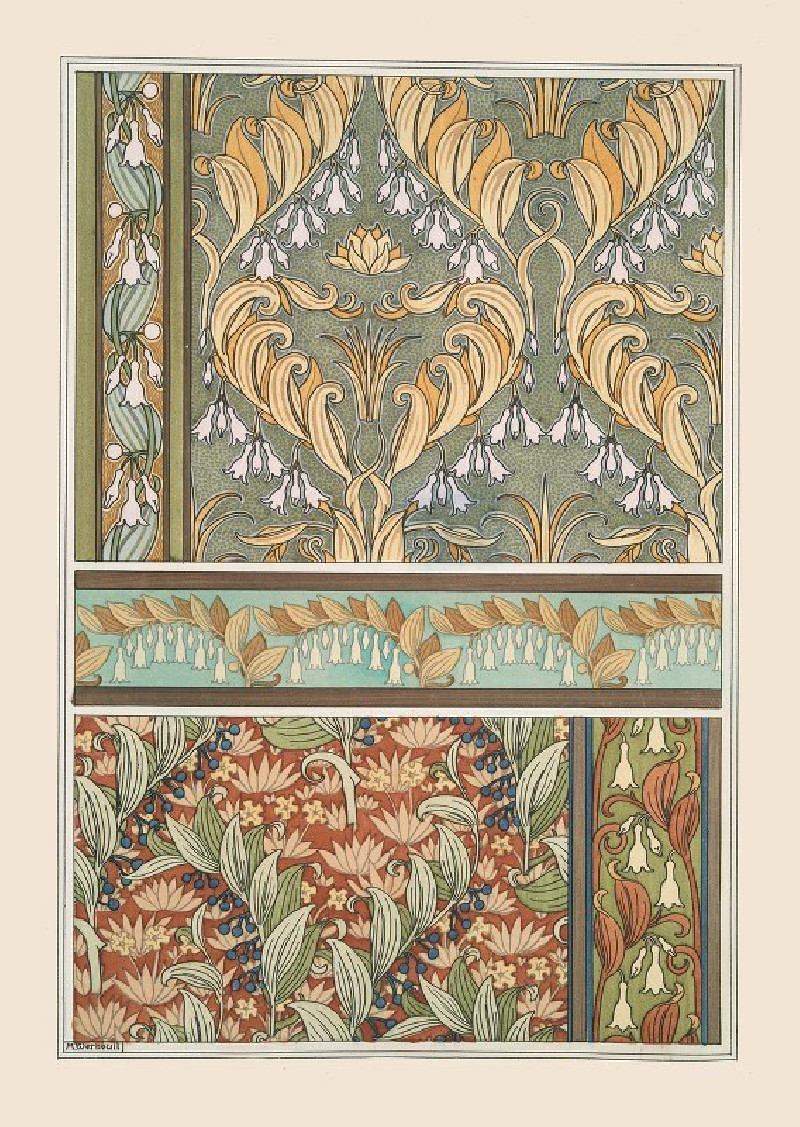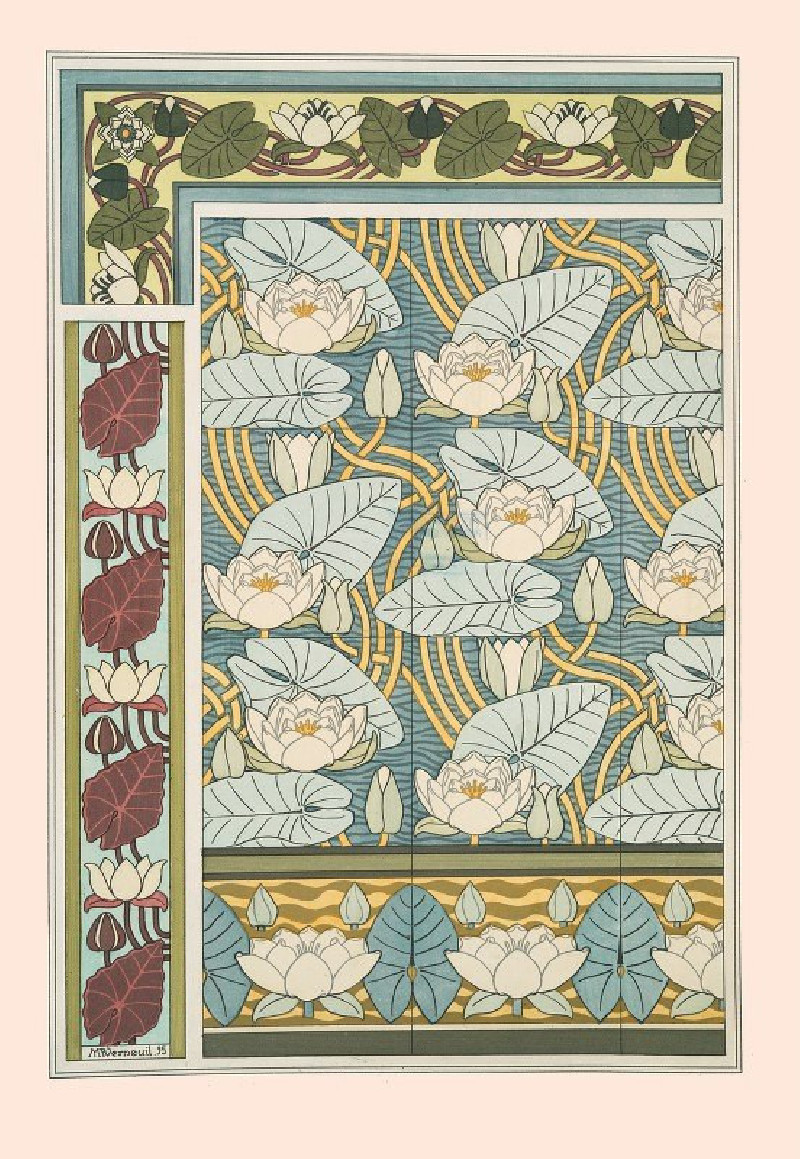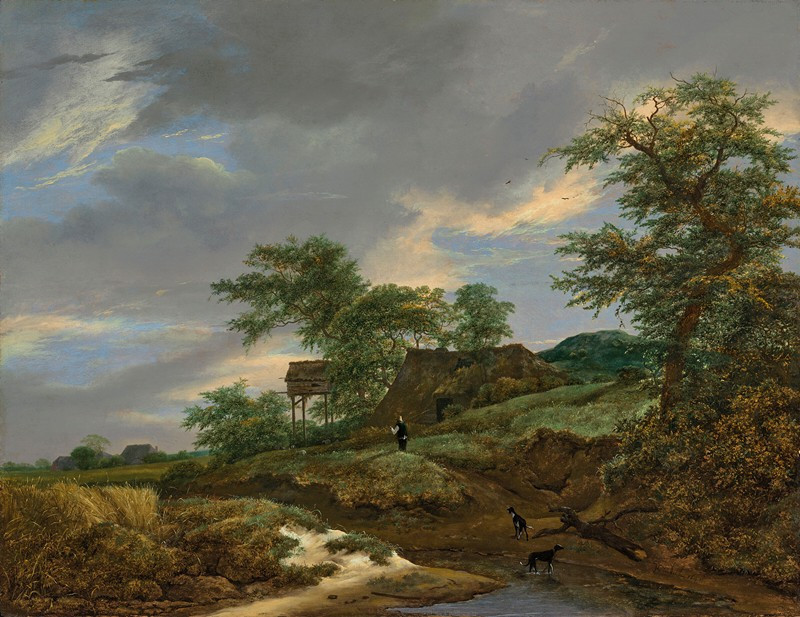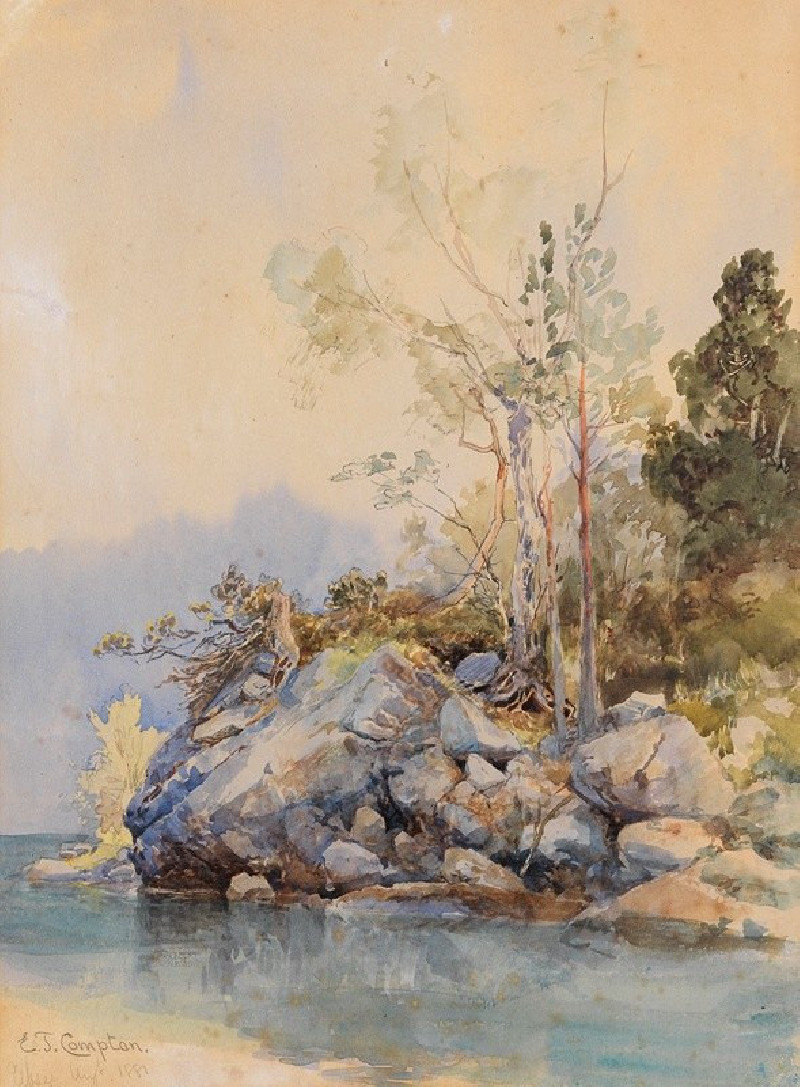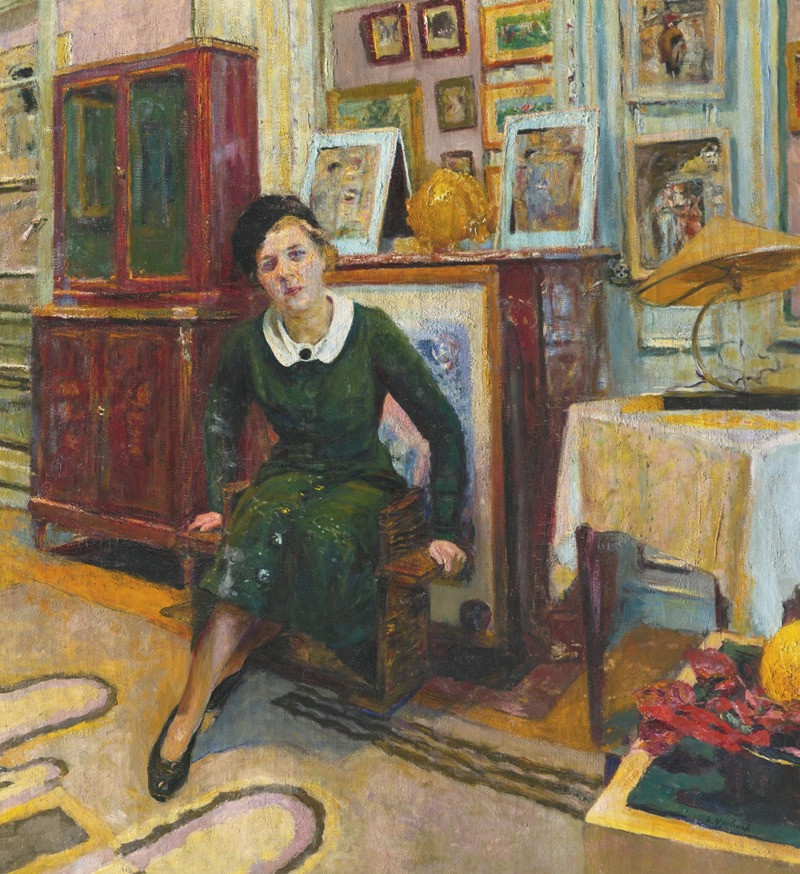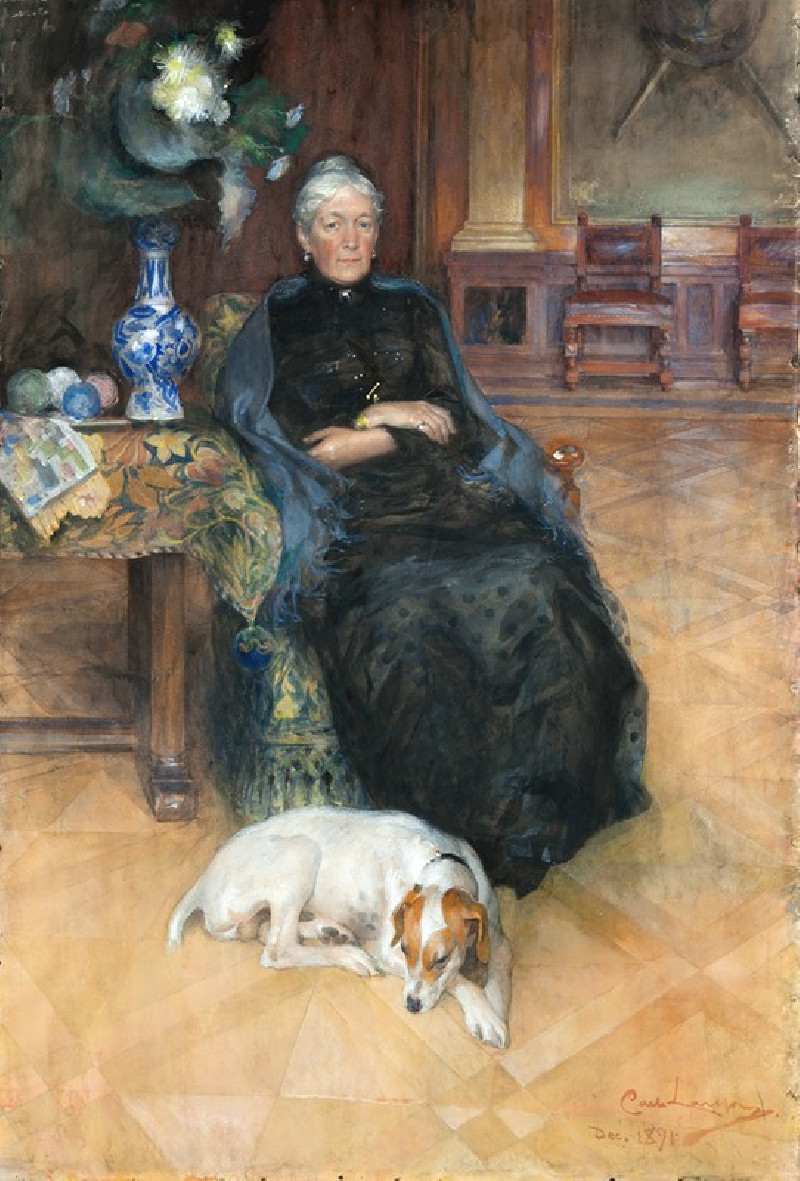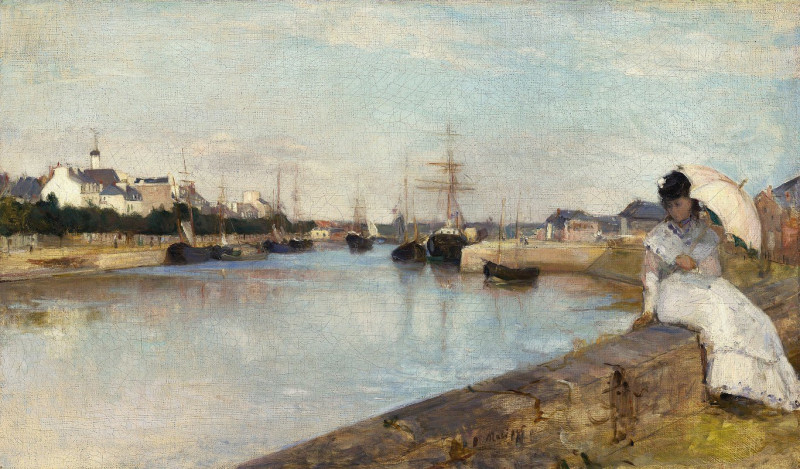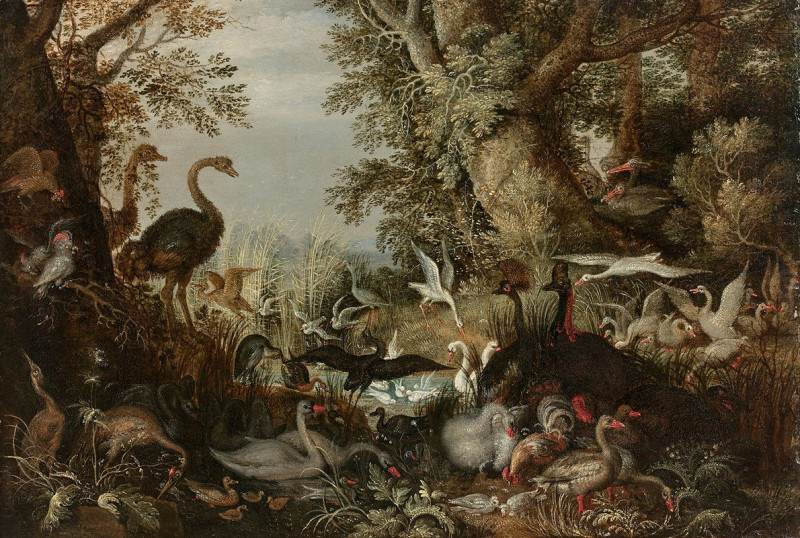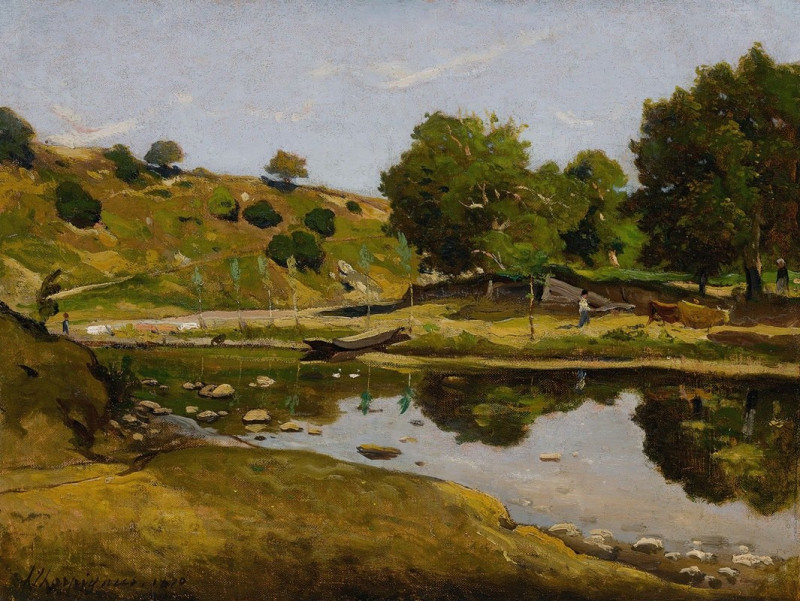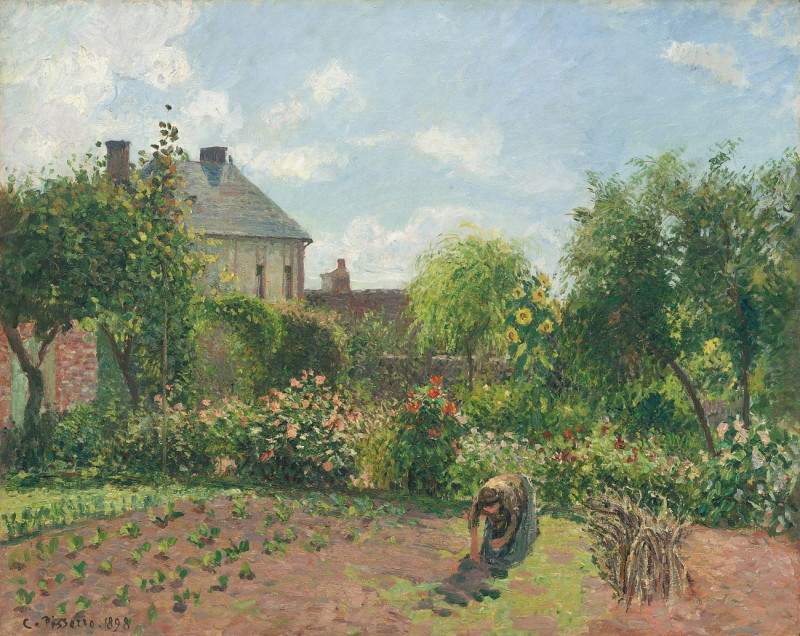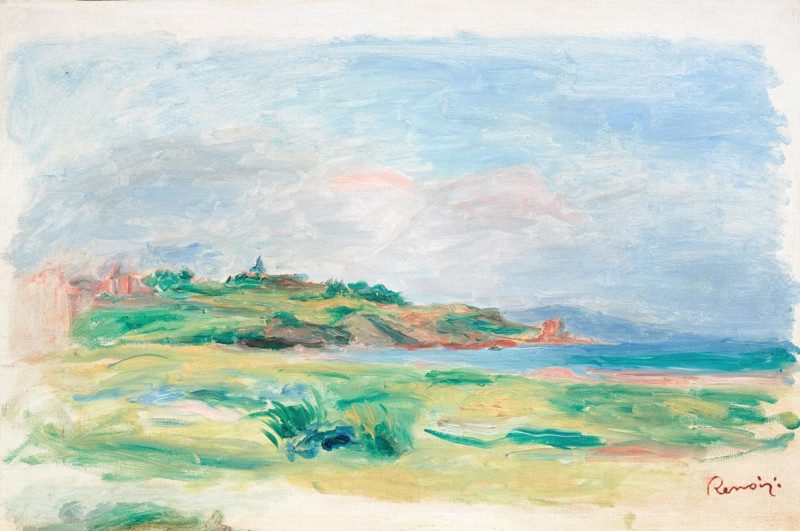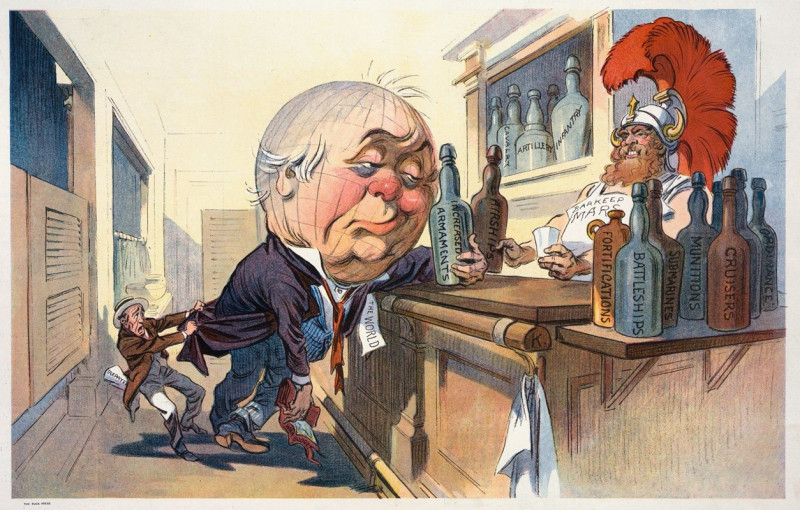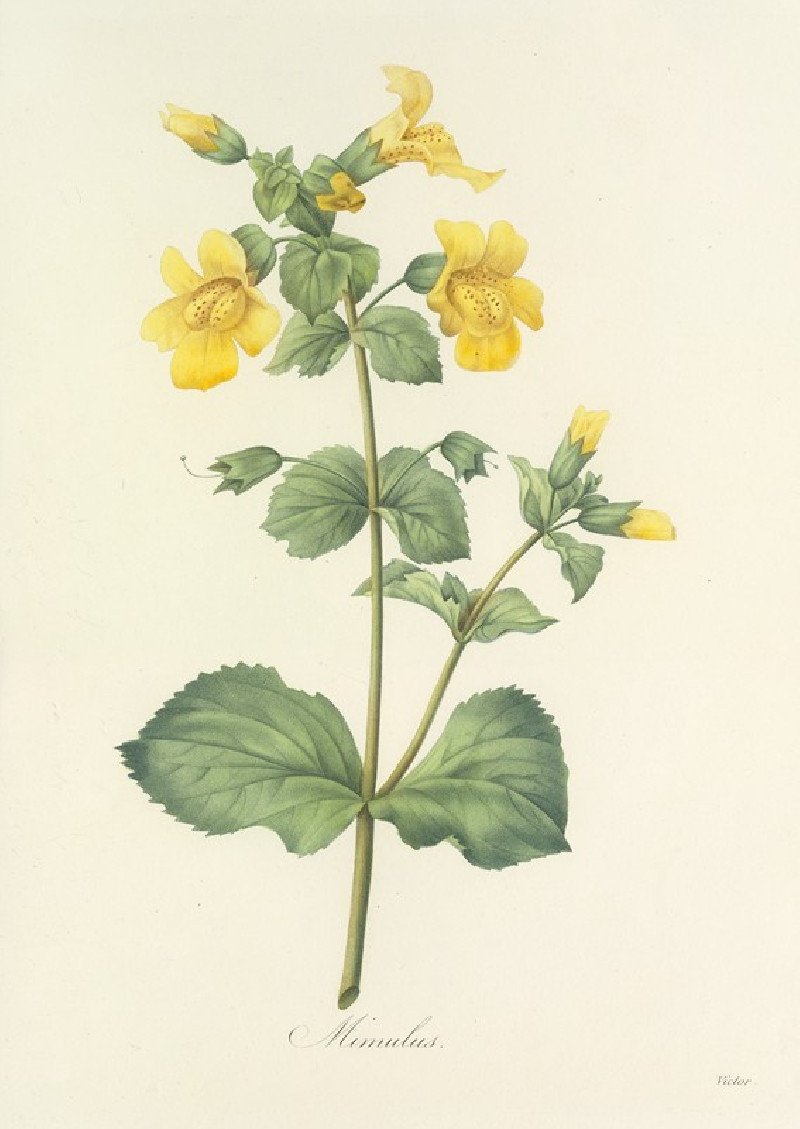Chrysanthème 3 (1896)
Technique: Giclée quality print
Recommended by our customers
More about this artwork
"Chrysanthème 3" by Maurice Pillard Verneuil is a beautifully orchestrated set of illustrations that highlight the diverse applications of the chrysanthemum motif in decorative arts. From the collection created in 1896, this painting is exemplary of Verneuil’s detail-oriented and nature-inspired design aesthetics that were significant during the Art Nouveau period.In this work, Verneuil intriguingly pairs the fluidity and organic form of the chrysanthemum flowers with structured decorative elements. The top left panel presents a lush spread of flowers intermingled with subtle vines and leaves, painted against a creamy background which makes the red and orange hues of the chrysanthemums vigorously stand out. The arrangement seems almost symmetrical yet retains an effortless grace, typical of natural forms.Below this, the central panel is particularly striking, illustrating a luxurious chandelier shrouded in the elegant chrysanthemum pattern. This juxtaposition of industrial design with natural forms beautifully captures the essence of Art Nouveau - the harmonious blend of structure and nature.On the right, Verneuil offers a vertical slice of design, showcasing a denser arrangement with darker background tones. This not only provides contrast within the piece but also exhibits the versatility of the chrysanthemum motif, suggesting its adaptability to varied design needs from wallpaper to textiles.Through "Chrysanthème 3," Maurice Pillard Verneuil not only celebrates the inherent beauty of this floral theme but also its potential to inspire and transcend simple decor into an art form.
Delivery
Returns
Maurice Pillard Verneuil was a French artist and decorator in the Art nouveau movement. He was born in Saint-Quentin, France. Maurice Pillard Verneuil learned his trade from the Swiss designer Eugène Grasset. Maurice Pillard Verneuil then went on to become a well-known artist and designer. He was inspired by Japanese art and nature, particularly the sea. He is known for his contribution to the art deco movement and, in particular, his use of bold, floral designs in ceramic tiles, wallpapers and other furnishing textiles.

